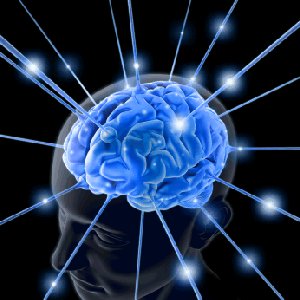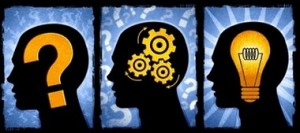Critical Thinking: The Laws of Thought

The Laws of Thought
The three classic Laws of Thought attributed to Aristotle were foundational in formalizing scholastic logic.
They are:
- The Law of Identity
- The Law of Noncontradiction
- The Law of Excluded Middle (aka. Excluded Third)
Law of Identity:
The Law of Identity states that an object is always exactly the same as itself: A≡A
Any reflexive relation upholds the law of identity. When discussing equality, the fact that “A is A” is a tautology.
Examples:
The sky is always the sky.
God is always God. (Hebrews 13:8)
I am that I am. (I AM ≡ I AM) (Exodus 3:14)
Law of Noncontradiction:
The Law of Noncontradiction states that contradictory statements cannot both be true at the same time, e.g. the two propositions A is B while simultaneously A is not B are mutually exclusive.
For instance, A may be B at one time, and not at another; A may be partly B and partly not B at the same time; but it is impossible to predicate of the same thing, at the same time, and in the same sense, both the absence and the presence of the same quality.
The Law of Noncontradiction takes no account of the truth of either proposition; if one is true, the other is not; one of the two must be false.
Example:
God’s power is omnipotent. God’s power has limits.
Both statements cannot be true at the same time.
Law of Excluded Middle (aka. Excluded Third):
The law states that something is either (P or not -P): either something, or it is not the case that something.
This is also known as the Law of the Excluded Third, or: “there is no third possibility”. Therefore, this law also does not apply when there exist three or more possibilities.
For example, if P is the proposition: Hamlet is mortal.
…then the Law of Excluded Middle holds that the logical disjunction: Either Hamlet is mortal, or it is not the case that Hamlet is mortal.
…is true by virtue of its form alone.
That is, the “middle” position, that Hamlet is neither mortal nor immortal, is excluded by simple logic, and therefore either the first possibility (Hamlet is mortal) or its negation (it is not the case that Hamlet is mortal) must be true.
This law does not take into account the truth of either proposition, only that they are mutually exclusive, and exclusively when only two possibilities exist.
For example, if P is the proposition: Flowers are pink.
…then the Law of Excluded Middle holds the logical disjunction: Either flowers are pink, or it is not the case that flowers are pink.
…to be valid.
The law does NOT apply to the logical disjunction: Either flowers are pink, or flowers are yellow.
Since, obviously, flowers can be pink, yellow, white, red, purple, and so forth. Attempting to apply the law of the missing third when there are multiple possibilities leads to the fallacy of false crisis.
Conclusion:

While the concepts are simple, direct, even obvious, they are often forgotten in the grip of strident appeals to raw emotion or fallacious argumentation. In using the Laws of Thought while reasoning, rigorous thinking occurs and one can quickly discard nonessentials. This tends to radically clarify issues at hand.
As Christians, we are expected to know wisdom when we hear it, receive instruction in our hearts, and to perceive words of understanding.
To know wisdom and instruction, to perceive the words of understanding, to receive the instruction of wisdom, justice, judgment, and equity; (Proverbs 1:2-3)
Thinking in a disciplined way will surely assist us in fulfilling this directive.
Hallee
I’m so grateful for your visit, today.
You would bless me if you added me to your ![]() feed reader or subscribed
feed reader or subscribed  via email.
via email.
You can also become a fan on ![]() Facebook or follow me on
Facebook or follow me on ![]() Twitter. I would love to see more of you!
Twitter. I would love to see more of you!


null Enjoyed your article. Not to lengthy and not boring.
Keep up the good work!